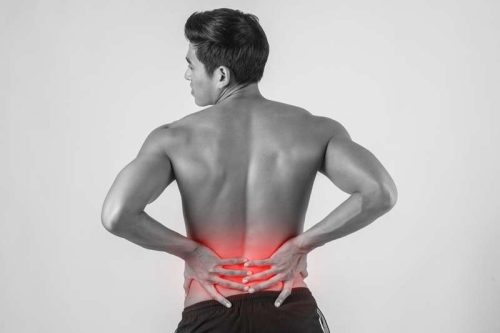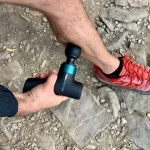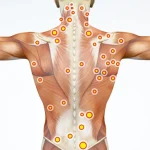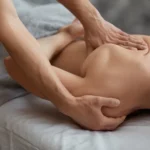If you are experiencing tailbone pain or mobility issues, massage can be a great tool for relief. In this article, we will provide step-by-step instructions on how to massage your tailbone to reduce pain and improve mobility. We will discuss the benefits of tailbone massage, the different techniques to use, and how to get the most out of your massage session. By the end of this article, you should be able to confidently massage your tailbone to relieve pain and improve your overall mobility.
Benefits of Massaging Your Tailbone

1. Pain Relief: Massaging your tailbone can help reduce pain and discomfort caused by tailbone injuries. It can also help relieve nerve pain and pressure in the lower back.
2. Improved Mobility: Massaging your tailbone can help improve flexibility and range of motion in your tailbone area. This can help reduce stiffness and make it easier to move and perform daily activities.
3. Reduced Stress: Massaging your tailbone can help reduce stress and tension in the area. It can also help relax the muscles and relieve muscular tension.
4. Improved Circulation: Massaging your tailbone can help improve circulation in the area, which can help reduce inflammation and improve healing.
5. Improved Posture: Massaging your tailbone can help improve your posture by helping to align the spine and relieve pressure on the lower back.
6. Improved Digestion: Massaging your tailbone can help improve digestion by stimulating the muscles and organs in the area and helping to move food through the digestive system.
Preparing for the Massage

- Hygiene: Before starting a massage of your tailbone, it is important to practice good hygiene. Make sure that both your hands and the area around your coccyx are clean. Wear clean clothes and ensure that the sheets are changed regularly.
- Oil: Different massage oils can be used to help with the massage. Select one that suits your skin type and smells pleasant.
- Warmth: Before beginning the massage, you can heat the area around your coccyx using a warm compress or a heat pack. This will help to relax the muscles and make the massage more comfortable.
- Position: Lie on your stomach with your legs slightly bent. Place a pillow underneath your stomach for comfort. This will help reduce any strain on your back and provide a comfortable surface to massage your coccyx.
- Breathing: When massaging your tailbone, it is important to take deep breaths. This will help to relax the muscles and provide relief from the pain.
Massaging Your Tailbone

Locating the Tailbone
The tailbone is located at the base of the spine, and is composed of three to five small vertebrae. To locate your tailbone, sit up straight in a chair and feel along your lower back until you find a small, bony protrusion. This is your tailbone.
Applying Pressure
To massage your tailbone, start by applying gentle pressure with your fingertips. Using circular motions, massage the area for several minutes. Make sure to apply a moderate amount of pressure. Too much pressure may cause discomfort.
Targeting the Coccyx
The coccyx is the triangular-shaped bone at the end of the tailbone. To massage the coccyx, use your fingertips to apply gentle pressure in a circular motion. Be sure to apply enough pressure to feel the bone, but not too much to cause discomfort.
Massaging for Bruising
If you have a bruised tailbone, it is important to use a gentle touch when massaging the area. Start by applying gentle pressure to the area and using a circular motion. If you experience any pain, stop and try a different technique. For example, you can use ice to reduce swelling and inflammation. Additionally, you can use a cold compress or heat therapy to soothe the area.
By incorporating tailbone massage into your daily routine, you can help relieve pain and improve mobility in your lower back. To learn more about how to massage a bruised tailbone, consult a health professional.
Safety Considerations
- Pain: If you experience any pain while massaging your tailbone, stop immediately.
- Pressure: Apply gentle pressure when massaging your tailbone, as too much pressure can cause further injury.
- Heat: Do not use heat treatments, such as a heating pad or hot water bottle, as these can cause further damage to the area.
- Position: Always massage your tailbone in a comfortable position. Avoid twisting or arching your back when massaging.
- Injury: If you have a history of lower back injury, consult with your doctor before attempting to massage your tailbone.
Other Ways to Relieve Tailbone Pain
- Heat Therapy – Applying heat to the coccyx area can help reduce pain and improve mobility. Use a heating pad, hot water bottle, or warm bath for relief.
- Ice Therapy – Ice can help reduce swelling and inflammation. Apply an ice pack, cold water bottle, or cold compress to the affected area.
- Yoga – Certain yoga poses can stretch and strengthen the muscles around the tailbone, relieving pain. Child’s Pose and Corpse Pose are particularly effective.
- Medication – Over-the-counter pain relievers like ibuprofen, acetaminophen, or naproxen sodium can help reduce inflammation. In some cases, a doctor may prescribe stronger medication.
- Physical Therapy – Working with a physical therapist can help improve mobility and reduce pain through targeted stretching and strengthening exercises for the tailbone area.
- Coccyx Cushion – Using a donut pillow can reduce pressure on the tailbone and improve posture. Place it on a chair or car seat for additional support.
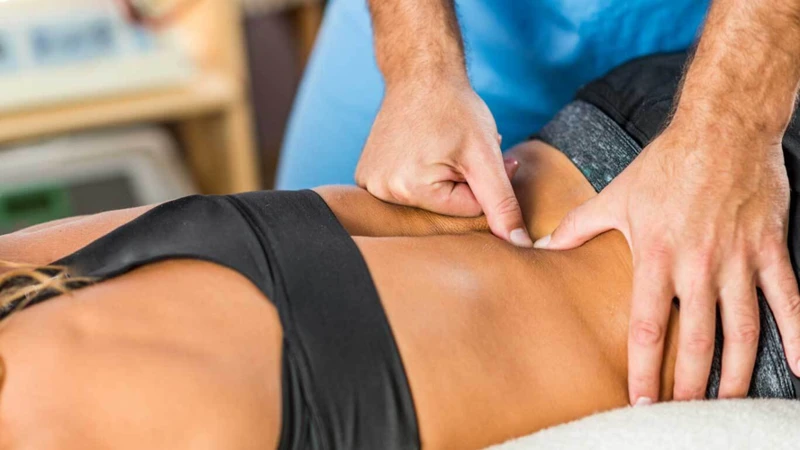
Frequently Asked Questions
What type of pain can massage help with?
Massage therapy can help to reduce pain caused by chronic conditions such as lower back pain, neck pain, headaches, and sciatica. It can also help to alleviate muscle tension, soreness, and stiffness. Massage can also be used to reduce tension and stress in the body, improving circulation and helping to improve overall mobility.
What are the Benefits of Massaging My Tailbone?
Massaging your tailbone can provide numerous physical and mental benefits. It can reduce pain and improve mobility in the lower back and hips, as well as promote relaxation and reduce stress. It can also increase blood flow and improve circulation in the area, which can help to reduce inflammation and reduce muscle tension. Massaging your tailbone can also help to improve your posture and reduce the risk of developing further back pain.
How often should I massage my tailbone?
How frequently you should massage your tailbone will depend on your individual needs. Generally, it’s recommended to massage the area at least two to three times a week. You can also massage it more often if you feel it is helping you to reduce pain and improve mobility. Additionally, if you suffer from chronic pain, it’s best to seek medical advice before beginning any massage therapy.
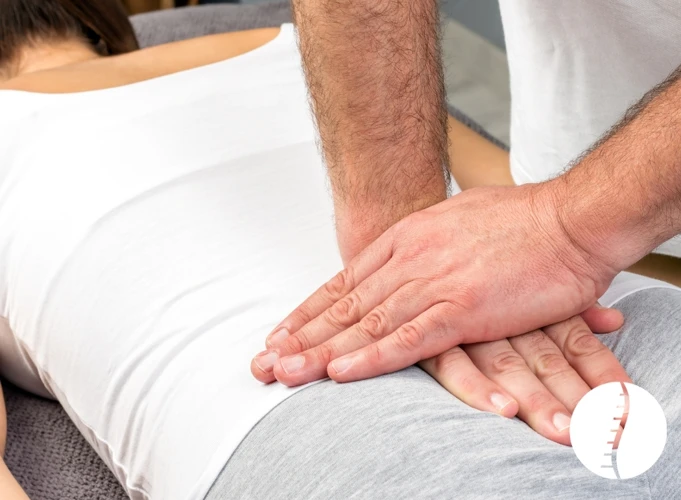
Are there any contraindications for tailbone massage?
Tailbone massage is generally safe for most people, however there are some contraindications that should be considered before proceeding. It is important to talk to a doctor or physiotherapist to determine if massage is suitable for you.
Contraindications include:
- Infection or inflammation in the tailbone area
- Recent surgery or injury to the tailbone area
- Osteoporosis
- Fractured tailbone
- Pregnancy
- Herniated discs
- Serious medical conditions
If you have any of the above conditions, it is important to consult with a healthcare professional before engaging in any form of massage therapy.
What Types of Techniques Can I Use for Tailbone Massage?
Tailbone massage techniques can include cross-fiber friction, deep tissue massage, and trigger point therapy. Additionally, myofascial release, and soft-tissue mobilization can help to reduce pain and improve mobility. Cross-fiber friction involves the massage therapist using their fingers to rub the tissue in a circular motion against the grain of the muscles. Deep tissue massage involves the therapist using their fingers, thumbs, and knuckles to reach deeper layers of muscle and connective tissue. Trigger point therapy involves the therapist applying pressure to tight areas of the muscle which can help reduce pain and inflammation. Myofascial release involves the therapist applying gentle pressure to the muscle to release any adhesions or knots. Finally, soft-tissue mobilization is a technique that uses gentle massage strokes to promote healing and improve mobility.
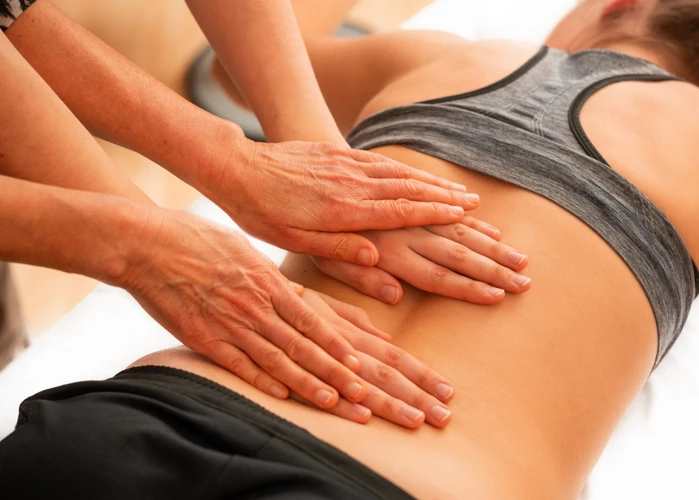
Conclusion
Tailbone massage can be beneficial for those who suffer with pain or limited mobility in their lower back. With the right technique and pressure, it can help to alleviate pain, reduce inflammation, and improve mobility. However, it’s always important to speak to a healthcare professional before attempting to massage your tailbone yourself.
📚References
- Clinical Effectiveness of Massage for Low Back Pain: A Systematic Review
- The Effects of Trigger Point Massage on Sacroiliac Joint Dysfunction
- Sacrum – Wikipedia

